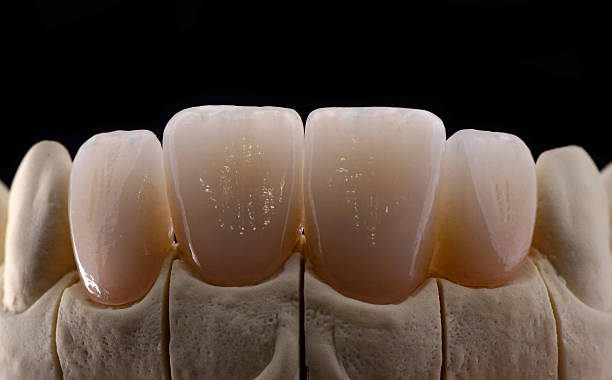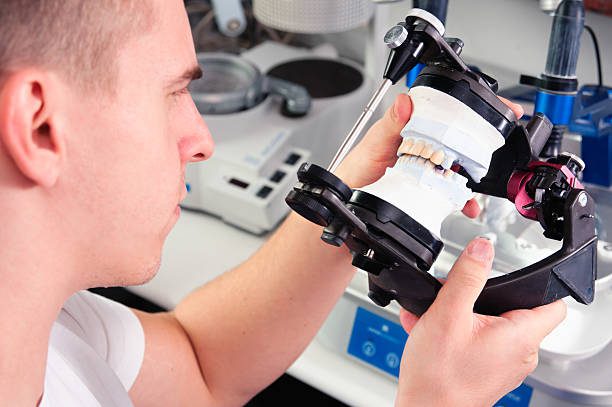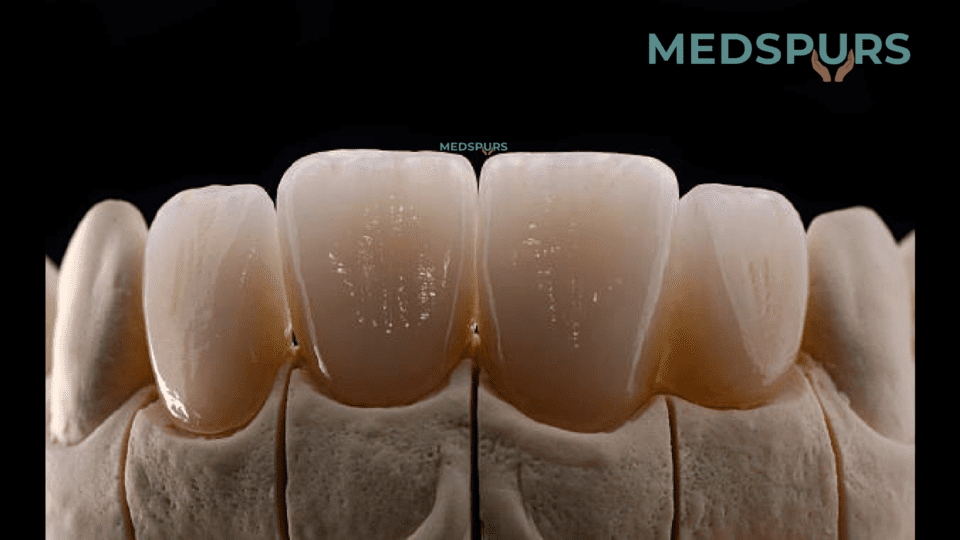⚠️ Medical Disclaimer
Important: This content is for informational and educational purposes only. It should not be used as a substitute for professional medical advice, diagnosis, or treatment. Always consult with a qualified healthcare provider before making changes to your diet, taking supplements, or if you have questions about a medical condition. Never disregard professional medical advice or delay seeking it because of information you read here.
Last Updated on January 24, 2024 by Grace Oluchi
Prosthodontics is a specific area field of dentistry that focuses on the fixing and takes the place of missing or damaged teeth. Prosthodontists expertly train in the field of prosthodontics and work together with patients to fix their smiles and improve their oral health. Prosthodontics can involve a variety of treatments, including crowns, bridges, implants, and dentures. The goal of prosthodontics is to improve the function and appearance of the teeth and nearby structures, so that patients can have a healthy and beautiful smile.
What is Prosthodontics?
Prosthodontics is the branch of dentistry that deals with the fixing and takes the place of teeth. It’s a complex and highly specific field that requires years of training beyond dental school. Prosthodontists are experts in creating and fitting not-real teeth, as well as fixing and restoring natural teeth. They use a variety of techniques and materials to create teeth that looks like the real thing, gums, and nearby structures, so that patients can have an able and beautiful smile.


The focus of prosthodontics is on fixing the function, appearance, and comfort of the teeth and jaw. Prosthodontists often work with other specialists, such as oral surgeons and periodontists, to ensure the best possible outcome for their patients. Prosthodontics is a dynamic field that is constantly growing, with new and differnt materials and techniques coming up at a rapid pace. If you’re considering prosthodontics, be sure to consult with a trained prosthodontist to find out if it’s right for you.
Which People Need Prosthodontics?
Here are the types of people who might need prosthodontics. Remember, this is not an complete list, and each person’s needs are unique. Your prosthodontist will be able to determine if prosthodontics is right for you or not. They are people with:
- Missing teeth due to decay or trauma
- Cracked or chipped teeth
- Worn or discolored teeth
- Discomfort when chewing or speaking.
- TMJ disorders or other bite problems
- Severe gum disease
- Congenital disorders of the teeth or jaw
- Cancer of the mouth or jaw
Let’s Talk About Prosthodontics Appliance.
Dentists either permanently attach prosthodontic appliances (fixed prosthodontics) or design them to be removable prosthodontics. Fixed prosthodontics include crowns, bridges, and implants, while removable prosthodontics include dentures and partial dentures. Here are some examples of prosthodontic appliances:
- Crowns
- Bridges
- Dentures
- Implants
- Veneers
- Partial dentures
- Mouth guards
- Orthodontic appliances
You May Also Read
- Teeth Whitening The Ultimate Guide to Smile Brighter
- Cleft Chin: Removal, Implants, Cost and Causes.
- Violin Hips: What they are, causes and treatments
- Is the Diet Coke bad for you?
A wide range of materials can be in use to make prosthodontic appliances, including metals such as gold and titanium, ceramics such as porcelain, and plastics such as acrylic.
How To Differentiate a Dentist and a Prosthodontist.
The main difference between a dentist and a prosthodontist is their level of training and knowledge. Dentists provide general dental care, including stopping and fixing care, and can perform many of the same procedures as prosthodontists. However, prosthodontists have experienced more training in the specific field of prosthodontics, and they focus solely on fixing and changing teeth.
In addition, while dentists can provide some prosthodontic services, only prosthodontists are able to provide all prosthodontic procedures.
What is the Difference Between Orthodontics and Prosthodontics?
Orthodontics and prosthodontics are both focus areas of dentistry, but they focus on different things. Orthodontics focuses on fixing crooked teeth and jaw problems, while prosthodontics focuses on fixing or changing missing teeth. Here are some more specific differences:
- Orthodontists: specialize in fixing crooked teeth and improving bite alignment. They may use braces, clear aligners, or other appliances to straighten teeth.
- Prosthodontists: specialize in replacing missing teeth and restoring damaged or diseased teeth.
Is Prosthodontics the Same as Dentures and Implants?
No, prosthodontics is not the same as dentures or implants, but it does include them. Dentures and implants are just two of the many procedures that prosthodontists perform. In fact, prosthodontics covers a wide range of treatments, including veneers, crowns, bridges, and other restorative procedures. Prosthodontists train in all of these procedures and can recommend the best treatment for each patient. So, it’s not true to say that prosthodontics is the same as dentures or implants – it’s actually much more than that!
How Much Does a Prosthodontic Procedure Cost?


The cost of a prosthodontic procedure can vary depending on several factors, including the type of procedure, the materials used, and the location of the dentist. However, as a general rule, prosthodontics is typically more expensive than general dentistry procedures. In the United States, the average cost of a crown is between $500 and $2,500, and the average cost of a denture is between $500 and $4,000.
What are Some Examples of Prosthodontic Treatments?
Here are some common prosthodontic treatments:
- Dental implants – A dentist surgically places dental implants in the jawbone to support a crown, bridge, or denture.
- Dental crowns – custom-made “caps” that cover damaged or weakened teeth.
- Dental bridges – a fixed prosthesis that replaces one or more missing teeth.
- Dentures – removable prostheses that replace all or some of the teeth.
- Veneers – A dentist bonds thin shells, known as veneers, to the front surface of teeth to improve their appearance.
Dental Implants.
Dental surgeons insert titanium posts, known as dental implants, into the jawbone through surgery. Once the implants have fused with the bone, they can be in use to support a crown, bridge, or denture. Dental implants have a very high success rate and can be a great option for replacing missing teeth. They look and function like natural teeth and can last for many years with proper care. Implants also help to preserve the jawbone, which can deteriorate without the stimulation of natural teeth.
Dental Crowns.
A dentist places a cap-like covering, called a crown, over a tooth to restore its shape, size, strength, and appearance. Made from porcelain, ceramic, metal, or a combination of these materials, crowns can protect weak teeth from breaking, repair broken or damaged teeth, and cover misshapen or discolored teeth. They can also support dental bridges.
Dental Bridges.
A dentist places a dental bridge to replace missing teeth. The bridge consists of artificial teeth (called “pontics”). The natural teeth supports them on either side of the gap. Dentists place crowns on the natural teeth to hold the artificial teeth (called pontics) in place. Crowns can be from porcelain, ceramic, or metal, and are usually permanent. For people with one or more missing teeth, bridges can be a good alternative to dental implants.
Dentures.
Dentists create and fit dentures, which are removable prosthetic devices in use to replace missing teeth. Dentures are from acrylic, nylon, or metal, and can be partial (to replace some missing teeth) or full (to replace all of the teeth in the upper or lower jaw). Dentists secure partial dentures with dental adhesive, and can secure full dentures with dental implants. Modern dentures are more comfortable and natural-looking than ever before, and they can help improve the appearance and function of the teeth and gums.
Veneers.
Here’s the scoop: Veneers are thin, custom-made shells that are placed on the front surface of the teeth to improve their appearance. Veneers can be used to change the color, shape, size, and length of teeth. They are usually made from porcelain or ceramic, and they are bonded to the teeth with a strong adhesive. Veneers are a popular choice for people who want to improve the appearance of their smile, and they can last for many years with proper care.
What are the Benefits of Prosthodontics?
Prosthodontics has many advantages, and here are some of the main ones:
- Prosthodontics can help improve the appearance and function of the teeth.
- Prosthodontic procedures can help prevent further damage to the teeth and gums.
- Prosthodontic devices can improve a person’s self-esteem and confidence.
- Prosthodontic procedures are usually non-invasive and cause little to no discomfort.
- Prosthodontic devices can look and feel like natural teeth.
- Prosthodontics can help improve speech and chewing ability.
- Prosthodontics can help with TMJ (temporomandibular joint) disorders.
- Prosthodontics can help improve the overall health of the mouth.
- Prosthodontic devices are durable and can last for many years with proper care.
- Prosthodontic procedures can be completed in just a few visits to the dentist.
What are the Risks of Prosthodontics?
While prosthodontics is generally safe and effective, there are some risks to consider:
- There is a risk of infection, particularly if the prosthodontic device is not cleaned and cared for properly.
- There is a risk of the prosthodontic device becoming loose or dislodged.
- There is a risk of damage to the teeth, gums, or surrounding tissues.
- There is a risk of allergic reaction to the materials used in prosthodontic devices.
- There is a risk of discomfort or difficulty getting used to the prosthodontic device.
What is the Recovery Time for Prosthodontics?
The recovery time for prosthodontic procedures can vary depending on the type of procedure and the individual patient. In general, most people can resume normal activities within a few days to a week after the procedure. However, it may take several weeks or months for the tissues to fully heal and for the prosthodontic device to feel completely natural. It is important to follow all of the dentist’s instructions for recovery, including any restrictions on diet or activity.
When Should I Contact My Prosthodontist?
If you experience any of the following symptoms after a prosthodontic procedure, you should see your healthcare provider:
- Pain that does not go away with over-the-counter pain medication.
- Fever.
- Swelling, redness, or bleeding that does not go away after a few days.
- Difficulty eating or talking.
- Numbness or tingling in the face, mouth, or tongue.
- Difficulty breathing.
- Any other symptoms that concern you.
The Key Takeaway.
The benefits of prosthodontics are clear – improved appearance, function, and health. It’s also clear that prosthodontic procedures require a commitment to caring for the teeth and gums and a willingness to follow the dentist’s instructions. While there may be some risks and discomfort involved, the end result can be life-changing. With prosthodontics, you can smile confidently and enjoy a better quality of life.
Prosthodontics is a field of dentistry that is constantly evolving. New materials and techniques are being developed all the time, which means that the treatment options available today are better than ever before. If you are considering prosthodontics, it’s important to consult with a qualified prosthodontist who can help you understand all of your options and make the best decision for your individual needs. With the right treatment, you can enjoy a beautiful, healthy smile for years to come.
FAQs on Prosthodontics.
What are the four branches of prosthodontics?
Here are the four main branches of prosthodontics:
- Fixed prosthodontics – This branch focuses on the design and placement of fixed prosthetics, such as crowns, bridges, and implants.
- Removable prosthodontics – This branch focuses on the design and placement of removable prosthetics, such as dentures and partial dentures.
- Maxillofacial prosthodontics – This branch focuses on the design and placement of prosthetics for the maxillofacial region, which includes the jaw, face, and neck.
Why is prosthodontics important in dentistry?
First, prosthodontics can help improve the function and appearance of teeth, which can have a major impact on a person’s quality of life.
Second, prosthodontics can help prevent further damage to the teeth and gums, which can save people money and time in the long run.
Third, prosthodontics is an important part of comprehensive dental care, which means that people who have prosthodontic procedures are more likely to have healthy teeth and gums overall.
What is the role of prosthodontics?
The role of prosthodontics in dentistry is to restore and improve the function and appearance of the teeth and gums. Prosthodontists work with other dental professionals to create treatment plans that are tailored to each individual patient’s needs. They also educate patients on the importance of oral health and the benefits of prosthodontic procedures. Additionally, prosthodontists are often involved in research and development of new materials and technologies that can improve dental care. In short, the role of prosthodontics is to improve the quality of life for patients through the restoration and enhancement of their smiles.
Who is the father of dentistry?
The father of dentistry is generally considered to be Pierre Fauchard, a French surgeon who lived from 1679 to 1761. Fauchard is credited with being the first person to write a comprehensive book on dentistry, called The Surgeon Dentist. In this book, he described in detail many of the dental procedures that are still used today, such as the use of dental instruments, the treatment of tooth decay, and the construction of dentures. He is also credited with developing the concept of preventative dentistry.
Can a prosthodontist do braces?
Yes, a prosthodontist can do braces! In fact, many prosthodontists specialize in orthodontics, which is the branch of dentistry that deals with correcting tooth and jaw alignment. Prosthodontists who specialize in orthodontics can provide a wide range of services, including traditional metal braces, clear braces, and Invisalign. They can also perform other procedures that are related to tooth and jaw alignment, such as palate expanders and jaw surgery. If you’re considering getting braces, it’s a good idea to consult with a prosthodontist to see if they’re right for you.
What is another name for prosthodontics?
The term “prosthodontics” is often used interchangeably with “prosthetic dentistry.” Both terms refer to the same field of dentistry, which focuses on restoring and improving the appearance of the teeth and gums. The term “prosthodontics” is used more frequently in the United States, while “prosthetic dentistry” is more common in Europe. Regardless of what you call it, the goal of prosthodontics is to help patients achieve a healthy and attractive smile.
Prosthodontics in London (Uk)
The United Kingdom has a long and distinguished history in the field of prosthodontics. In fact, London is considered one of the world’s leading centers for prosthodontics. The Royal College of Surgeons of England, located in London, is one of the oldest and most respected medical institutions in the world, and it is home to some of the top prosthodontists in the world. In addition, the British Dental Association has a special section dedicated to prosthodontics, which is a testament to the importance of this field in the UK.

